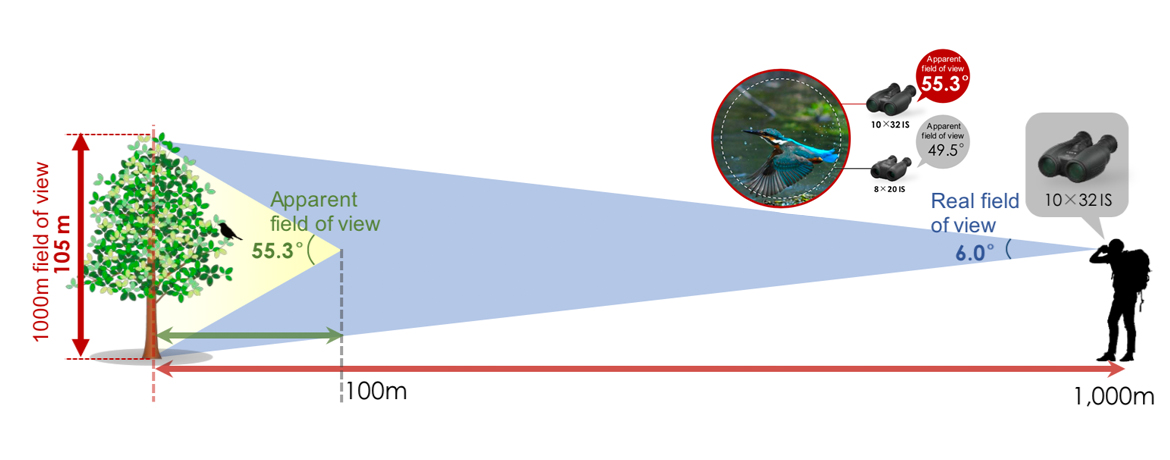Prism Types
Prism-type binoculars are split into two categories - Porro and Roof types. As our binoculars are designed with resolution and brightness in mind, all Canon binoculars are constructed with Porro prism for its superior optical performance. It delivers a high level of sharpness, suppresses light loss, and focuses light directly to the eyepiece optics without any loss.
Porro Prism Type
Good:
Excellent optical performance
Poor:
Difficult to make into compact and lightweight version
Roof Prism Type
Good:
Easy to make into compact and lightweight version
Poor:
Cost tends to increase with optical performance improvisation
Types of Image Stabilization
Shift Method
This construction moves a lens equipped with a vibration gyroscope mechanism vertically and horizontally in the correct direction to cancel shaking. In addition to deliver sharp images with minimal colour bleeding, it offers better power saving performance than VAP method. As the construction is simple, it offers the advantage of a better grip design.
VAP Method
When two glass elements are arranged in a bellows shape within the lens barrel and filled with liquid, it is called a “liquid prism”. The lens changes shape according to shaking, adapting to the direction of refraction to instantly stabilize the image. The left/right VAP units are connected and driven by a simple mechanism. This construction results in a compact size and precise conformity between the left/right optical axes, lessening the load on the drive actuator for reduced power consumption.
Eye Relief
Eye relief refers to the length where the image is visible without obstruction. Binoculars with a longer eye relief (high eyepoint) are easier to look through and causes less fatigue even after long period of use.
When using the binoculars with glasses, we recommend to reverse the eyecups.

